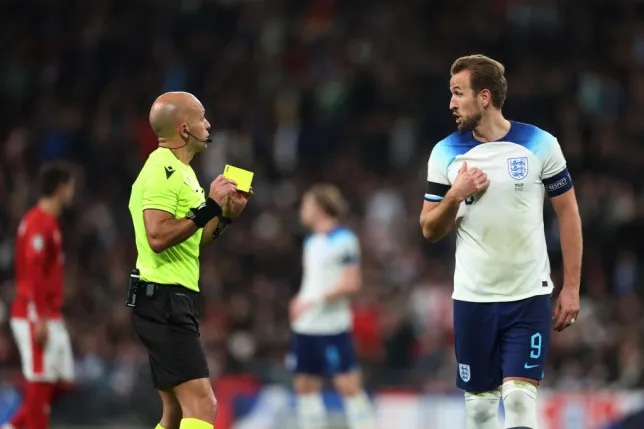
Referee Luis Godinho under fire for giving Harry Kane yellow card: Referee Luis Godinho has drawn criticism for sending England captain Harry Kane a yellow card during The Three Lions’ victory over Malta on Friday in their Euro 2024 qualifying match. enoughinfo
Read Also: Osimhen makes the Top 10 List for Men’s Player of the Year
Remember how England defeated Malta 2-0 at Wembley thanks to goals from Kane and an own goal from Enrico Pepe? How to learn a New Language and be consistent Learning it
Henry Bonello fouled Kane in the area during the match after the custodian carelessly gifted the ball to the opposition. 10 Creative strategies on how to pitch your idea Successfully

Referee Luis Godinho under fire for giving Harry Kane yellow card
However, referee Godinho blew for a free kick and cautioned Kane for simulation rather than signalling the penalty spot. How to grow your social media following (Amazing Tips)
The verdict left the Bayern Munich striker perplexed as VAR failed to reverse the on-field ruling.
According to reports, Jermaine Defoe, a striker for Tottenham Hotspur, discussed the incident on Channel 4 and claimed that the referee erred in assigning Kane a yellow card.
“When I first saw it, I thought it was a penalty and when you slow it down you see the contact.
“Harry’s very clever in that he sticks his left leg out a little bit to make the contact but I don’t think it’s a yellow card,” Defoe said.
Joe Cole, a Chelsea player, concurred with Defoe and added, “Harry’s bought it.” The goalie has emerged after creating a mess.
“What Harry’s done is go, ‘go on, go on, hit me – contact, I’m going down’. In the rules of the game it is a penalty. I think the referee is rash, he got that one wrong.”
Also, former Manchester City defender Joleon Lescott said: “I definitely don’t think it’s a yellow but if he gives a pen I am not debating.”




